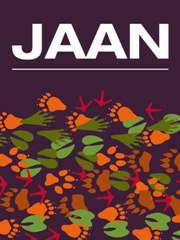Article contents
Effects of dietary supplementation of organic minerals on the performance of broiler chicks fed oxidised soybean oil
Published online by Cambridge University Press: 27 July 2017
Summary
The oxidation (rancidity) of fat is a very common feed quality issue, which can negatively affect growth performance and meat quality of broilers. Besides other factors, metal ions such as Zn, Cu and Fe can facilitate lipid peroxidation in feed. The objective of the current study was to investigate the effect of feeding corn soy diets containing fresh or oxidised soybean oil with different forms of microminerals on production performance of broiler chicks. Dietary treatments consisted of a 2 × 2 factorial structure with two kinds of soybean oil (oxidised or fresh) and two forms of microminerals (inorganic or organic). Mineral proteinate (Bioplex®, Alltech Inc.) including Zn, Mn, Cu and Fe was used as the organic source and was supplemented at the level equivalent to 25% of an inorganic source in the control diets. Organic selenium (Sel-Plex®, Alltech Inc.) at 0.3 mg/kg of diet was used to replace sodium selenite used at 0.3 mg/kg of diet in control diet. Oxidised soybean oil was prepared by convection heat (90°C for a period of seven days in a convection oven). A total of 1152 one-day old chicks were allotted randomly to the four dietary treatments using 12 replicates of 24 chicks per pen. Chicks were raised in floor pens for 42 days in an environmentally controlled room with free access to feed and water. There was no statistical interaction between oil source and mineral form on performance or mineral content of breast meat. Feeding oxidised oil increased (P < 0.05) feed intake and decreased gain to feed ratio (FCE) of chicks. Supplementation with organic minerals improved (P < 0.05) weight gain and FCE of chicks. The breast meat of chicks fed organic mineral had higher (P < 0.01) Se content than those from the control group. The results indicated that the addition of organic minerals to broiler diets can minimise the negative impact of oxidised oil on the performance of broiler chicks.
- Type
- Original Research
- Information
- Copyright
- Copyright © Cambridge University Press and Journal of Applied Animal Nutrition Ltd. 2017
References
- 3
- Cited by


